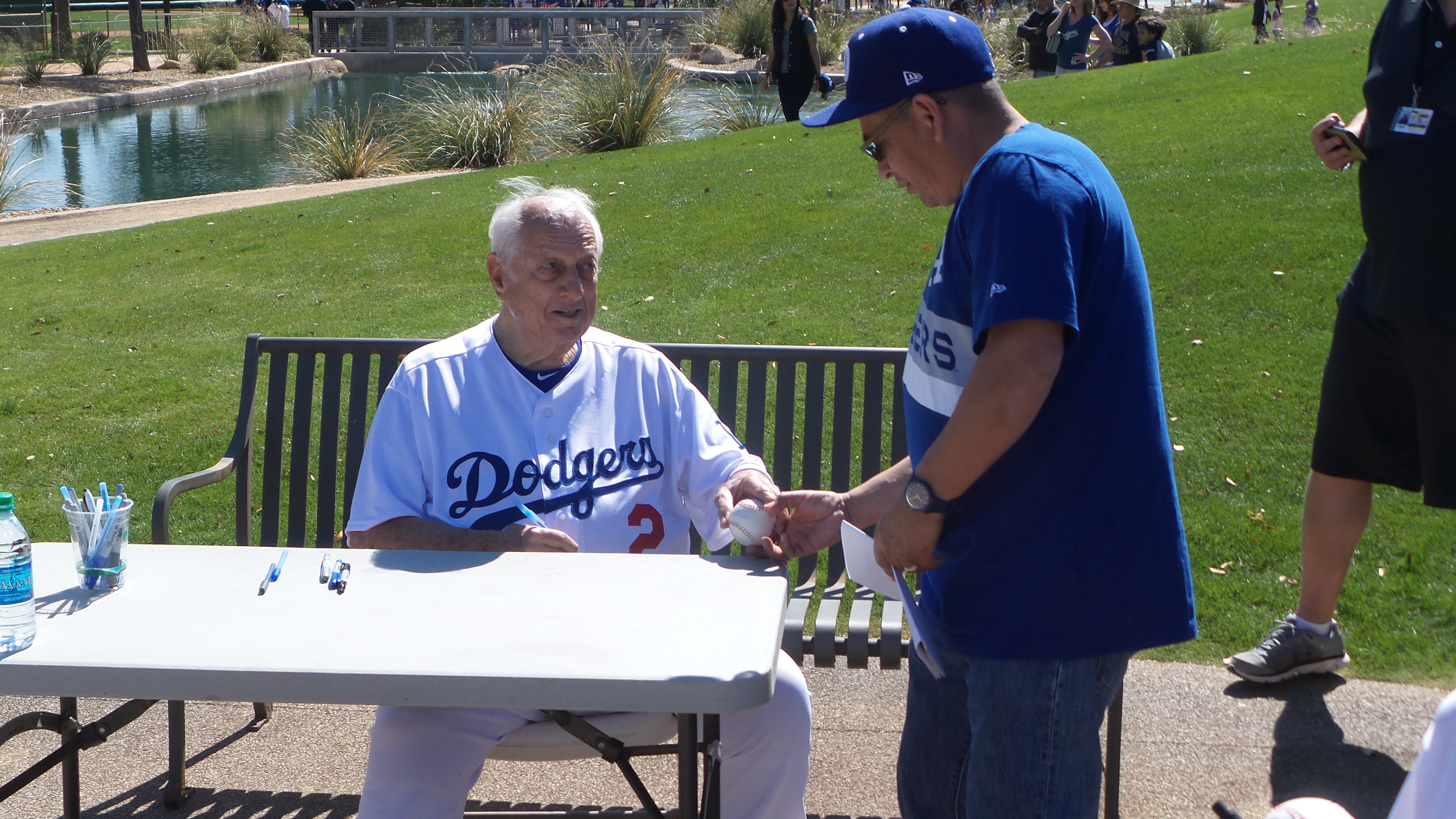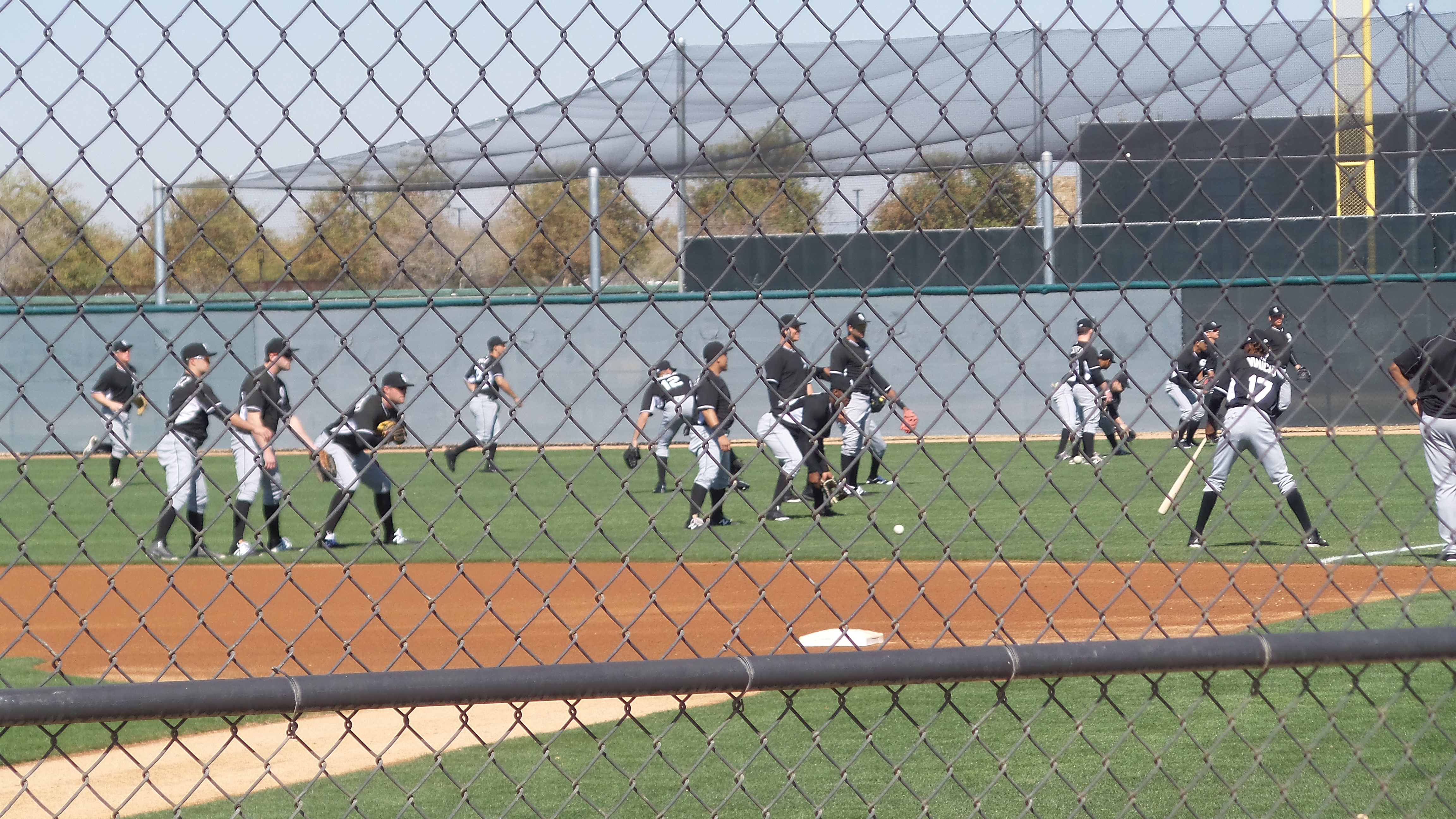By Roger Wallenstein
Standing at the fence on the berm above the White Sox bullpen in right field last Saturday in Arizona, my eight-year-old granddaughter Ava got a nice surprise. Blake Smith, a non-roster invitee who made four less-than-stellar appearances in relief for the White Sox last September, had been warming up as the game ended with the Sox on the short end of a 5-3 score against the Dodgers.
Smith looked up, singled out Ava, and instead of returning the ball to the bag resting beside him, tossed it up to the kid. She fumbled it. Might have been her genes. Smith flipped it up to her again. Same thing. Not to be deterred, Smith gave her a third chance, and my outstanding young grandkid snagged it. From my point of view, Smith will never make a better pitch, which was just one of many warm, friendly gestures that one finds on a typical spring training day.
During a time of executive orders, confrontation, hate, anger, and aggression all communicated by confounding, breaking, fake, and real news, the pace and mood of baseball’s annual six-week spring training ritual is a welcome antidote. Things tend to operate in slow motion as the ballclubs take their time getting prepared for the long season ahead.
This is a world of athletes with optimistic hopes of reaching the next level amid blue skies, warm temperatures and encouragement from coaches, fans, and teammates. And it can’t be rushed.
From the welcoming smiles of parking lot attendants who direct fans to the practice fields at 10:30 in the morning to the ushers thanking us for coming to the game, positivity is everywhere. Perhaps best of all, the White Sox haven’t even lost a game that counts. They’re .500!
Ranging from manager Rick Renteria to the lowest minor league player, there’s time in the desert for talking to fans, signing autographs, and enjoying the attention. Ava’s brother Jake, who’s 6, said “meeting the best player [Melky Cabrera] on the team” was his biggest thrill, and his dad confirmed, “He was very nice.”
That’s the point. Everyone is nice. On one of the practice diamonds at Camelback Ranch, there is plenty of room behind the left field fence, and a group of ball-chasers, most of whom brought their gloves, is present each morning for batting practice. The balls are flying over the fence with regularity – may that continue once April arrives – toward the adults and teenagers vying for souvenirs. The competition was far beyond our capabilities last weekend, but one kid, who appeared to be maybe 14, left his feet to make a fine catch between two other fielders. Spying Jake’s admiring gaze, the kid flipped the ball to the little guy, making a fine day that much better.
Spring training is filled with families on vacation. Moms and dads push strollers, while others accompany children of all ages. Middle-schoolers with notebooks filled with baseball cards wait patiently for a moment to get a ballplayer to sign. And almost without exception, they come away with an autographed card both for established stars and guys trying to break in. Who says kids don’t like baseball? Don’t believe it.
Most fans know that the Sox share Camelback with the Dodgers, who had far more followers present last Saturday. And good number of them waited patiently in line to meet 89-year-old Dodger icon Tommy Lasorda, who was seated at a table signing balls, hats, shirts, programs or whatever folks presented to him. The signatures of most present-day players are barely legible. Many add their uniform number to make themselves identifiable. However, Lasorda could have been a calligrapher, judging from the meticulous care he takes in creating perfectly readable autograph after autograph.

I’m trying to recall whether I saw any ballplayer, other than a couple legging out doubles once the exhibition game began, actually break out into a sprint on a practice field. I know that the exercise rooms are filled, but technique takes precedence over conditioning out on the fields.
There is batting practice, bunting practice – honest; the Sox actually drill on bunting – infield drills, catchers honing their footwork, and best of all, a group of minor leaguers playing the game of pepper on a back diamond.
At a luncheon I attended last winter, Ron Fairly, the former Dodger outfielder who also spent 27 years broadcasting baseball, was asked why so many hitters strike out today. Fairly gave a surprising answer, saying that the rarely-played game of pepper used to be an important part of teaching contact. And, lo and behold, here was a group of White Sox hopefuls soft-tossing balls from 45 feet to a batter choked up on the bat just trying to return the ball to the line of four or five fielders. Maybe there is cause for optimism for this South Side bunch.

Imagine a preseason practice day for an NFL or NBA team. The fierce competition for employment engender tension and immediacy. No doubt some of that is present in a major league baseball camp, but you sure don’t sense it. While the final spots on the roster will be highly contested, spring training tends to be more of a celebration of the game. Many fans dress in their teams’ regalia. They can relax in the grass behind the outfield fences. Four guys sitting behind us were in Arizona for a bachelor’s party. Retirees return to spring training year after year. No one seems in a hurry.
But don’t misunderstand. This is not a totally laid-back nirvana, especially for Renteria and his legion of coaches who work diligently to establish a protocol and a sense that this is a business focused on developing players and escaping mediocrity. One of his minor league coaches took time out from watching his charges play pepper when he spied an old acquaintance who was standing near me. I heard him say, “This isn’t like being a player. We’re here at 5 o’clock in the morning making plans.”
We’ll have to wait to see whether those long hours and careful strategy result in a future payoff for the Sox. For now, I’ll be rooting for a nice guy like Blake Smith. I’d be delighted if he can spot his fastball, break off a nasty slider or two, and fool hitters with his changeup. So would a certain 8-year-old girl who had a great day at the ballpark last Saturday.
–
Former Bill Veeck bar buddy Roger Wallenstein is our White Sox correspondent. He welcomes your comments.
Posted on February 28, 2017


